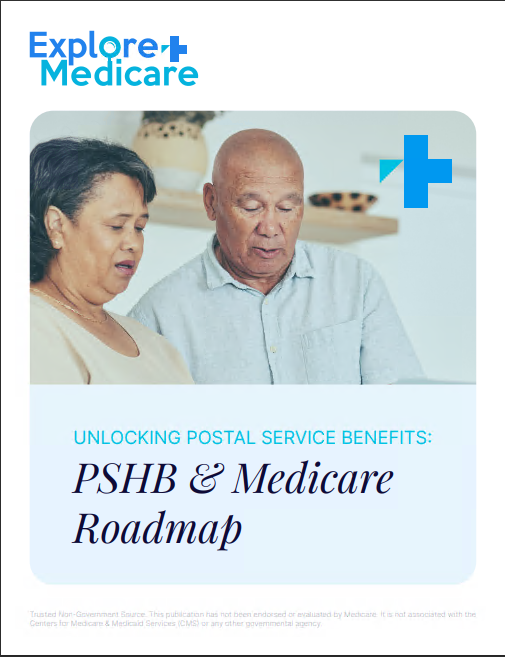Key Takeaways
-
Medicare has four main parts: A, B, C, and D, and each serves a distinct purpose. Understanding them clearly helps avoid unnecessary costs.
-
Mistaking one part for another or not coordinating them properly can result in penalties, coverage gaps, or high out-of-pocket expenses.
What Medicare Part A Covers and Why It Matters
Medicare Part A is known as hospital insurance. It covers inpatient care in hospitals, skilled nursing facilities, hospice care, and limited home health services.
In 2025, you typically qualify for premium-free Part A if you or your spouse paid Medicare taxes for at least 10 years. If not, you may need to pay a monthly premium.
Key things to know:
-
Inpatient hospital stays: Covers up to 90 days per benefit period, plus 60 lifetime reserve days.
-
Skilled nursing facility care: Up to 100 days following a qualifying hospital stay.
-
Hospice care: For those with terminal illnesses, including pain relief and support services.
-
Home health care: Limited to medically necessary part-time services.
Failing to sign up when you’re first eligible could lead to a late enrollment penalty, increasing costs permanently.
What Medicare Part B Does and Doesn’t Include
Medicare Part B covers outpatient medical services. This includes doctor visits, preventive care, diagnostic tests, durable medical equipment, and some home health services.
You pay a monthly premium for Part B in 2025, and there’s also an annual deductible. After meeting the deductible, you typically pay 20% of the Medicare-approved amount for most services.
What you get with Part B:
-
Physician services
-
Lab tests and X-rays
-
Preventive care like flu shots and screenings
-
Outpatient surgeries
-
Mental health services
If you don’t sign up for Part B when you’re first eligible and aren’t covered by other creditable insurance, you may face a 10% increase in your premium for each 12-month period you delay enrollment.
How Part C Combines Coverage—But Requires Extra Caution
Medicare Part C, also called Medicare Advantage, is an alternative to Original Medicare (Parts A and B). These plans are offered by private insurance companies approved by Medicare. They often bundle hospital, medical, and sometimes drug coverage in one plan.
While Medicare Advantage plans must offer at least the same benefits as Original Medicare, they can also include additional benefits like dental, vision, and hearing. However, you must still pay the Part B premium.
Points to keep in mind:
-
Network limitations: Many plans require you to use a specific provider network.
-
Cost structures: You may face different copayments or coinsurance.
-
Plan variability: Benefits and rules vary widely by plan and location.
Switching between Original Medicare and Medicare Advantage is allowed during the Medicare Open Enrollment period from October 15 to December 7 each year.
What Medicare Part D Offers for Prescription Drugs
Medicare Part D adds prescription drug coverage to your Medicare benefits. Like Part C, it’s offered through private insurers approved by Medicare.
You can get Part D as a standalone plan if you’re using Original Medicare, or it may be included in a Medicare Advantage plan.
What’s included:
-
Tiered formularies: Medications are grouped into tiers with varying costs.
-
Covered drug lists: These vary by plan and can change yearly.
-
Preferred pharmacies: Using network pharmacies can lower your costs.
In 2025, Part D includes a $2,000 cap on out-of-pocket drug costs—a significant change from previous years. This protection kicks in once your total out-of-pocket costs hit the threshold.
Avoiding penalties is crucial. If you don’t sign up when first eligible and lack other creditable prescription coverage, you may face a lifetime penalty added to your premium.
Why You Can’t Mix and Match Without Understanding the Rules
Many people think you can simply combine different parts of Medicare as you like—but coordination matters. Making assumptions about what’s covered can leave you underinsured or overpaying.
Here are key combinations to understand:
-
Original Medicare (Parts A + B) + Part D: Standard setup if you want drug coverage and choose not to go with a Medicare Advantage plan.
-
Medicare Advantage (Part C): Usually includes Part A, Part B, and sometimes Part D. You can’t enroll in both a Medicare Advantage plan and a standalone Part D plan unless the Advantage plan doesn’t offer drug coverage.
-
Supplemental Coverage (Medigap): Only works with Original Medicare, not with Medicare Advantage.
Each decision affects your coverage, provider access, and out-of-pocket expenses.
Enrollment Timelines You Can’t Afford to Miss
Timing is critical when it comes to Medicare enrollment. Here are the key windows:
-
Initial Enrollment Period (IEP): Starts three months before the month you turn 65, includes your birth month, and ends three months after. A total of seven months.
-
General Enrollment Period (GEP): January 1 to March 31 each year for those who missed their IEP. Coverage begins July 1.
-
Open Enrollment Period (OEP): October 15 to December 7 annually. You can switch between Original Medicare and Medicare Advantage or change Part D plans.
-
Medicare Advantage Open Enrollment: January 1 to March 31. Allows one switch between Medicare Advantage plans or a return to Original Medicare.
-
Special Enrollment Periods (SEPs): Triggered by life events such as moving, losing employer coverage, or qualifying for Medicaid.
Missing these windows can lead to gaps in coverage and financial penalties.
Common Misunderstandings That Could Cost You
It’s easy to confuse the parts of Medicare, especially when names and functions overlap. Here are some of the most frequent mistakes:
-
Thinking Part A covers all hospital-related costs: You may still owe coinsurance, deductibles, and costs beyond 90 days.
-
Believing Part B is optional if you have Part A: Delaying Part B without creditable coverage means higher premiums for life.
-
Assuming Part C always includes drug coverage: Some Medicare Advantage plans do not, and you can’t always add a Part D plan.
-
Signing up for both Medicare Advantage and Medigap: These two do not work together.
-
Overlooking late enrollment penalties: These are permanent and cumulative.
Why Coordination Is the Key to Better Coverage
Understanding how the parts of Medicare interact allows you to make smarter choices that match your medical needs and financial goals.
When coordinated properly:
-
You can avoid coverage gaps.
-
Your out-of-pocket expenses are more predictable.
-
You reduce your risk of penalties.
-
You ensure access to the providers and services you need.
Review your coverage during each enrollment period and make updates as your health and financial needs evolve.
Sorting It Out with a Clear Medicare Strategy
Knowing the differences between Parts A, B, C, and D isn’t just about terminology—it directly affects your care, costs, and peace of mind. Choosing the wrong combination or missing an enrollment period can have long-term consequences.
If you’re unsure how to move forward, don’t guess. Reach out to a licensed agent listed on this website to help you build a Medicare strategy that fits your unique situation.









